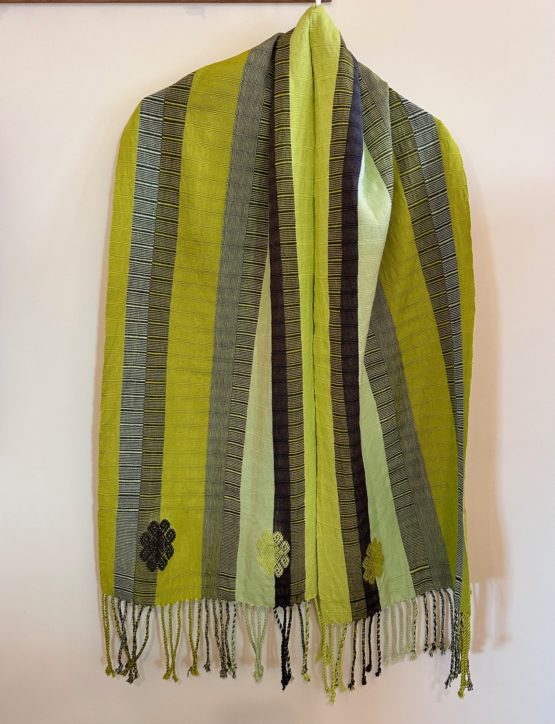Oaxaca Cultural Navigator LLC established a named scholarship at the Oaxaca Learning Center a few months ago to give back to the community we love and respect. The scholarship fund is supporting deserving students and mentors from indigenous communities who are either enrolled in or plan to enroll in university.
Education is our driving force. While we organize tours, our primary interest is in cultural and community appreciation, while understanding makers and what they make. We pride ourselves on creating experiences that offer in-depth insights into how people live and and work. Our goal is to give you an immersive experience that takes you into remote villages to meet women, men, and their families who create amazing works of art — textiles, pottery, basketry, food, alebrijes, and more — while giving you an understanding for history, social justice, public policy, and opportunities (or lack thereof) for economic opportunity.
Donate to Friends of Oaxaca Learning Center
Add your tax-deductible donation to the Oaxaca Cultural Navigator Scholarship Fund
This is why we chose to support the Oaxaca Learning Center. We are investing in the future of Oaxaca. The receipient of our first scholarship is Itzel Rodriguez Tolis, from San Mateo Cajonos, a Zapotec-speaking silk weaving village about 2-1/2 hours from Oaxaca City.
On her application, Itzel Says …
My name is Itzel Rodriguez Tolis, I was born on April 29, 2005, so I am 18 years old. I am originally from the community of San Mateo Cajonos, Villa Alta Oaxaca, located in the Sierra Norte of Oaxaca. My parents are Emilio Rodriguez Martinez and Sandra Tolis Baltazar, and I have two brothers named Yanneth Rodriguez Tolis and Abner Jediael Rodriguez Tolis.
I attended “Unión y Progreso Primary School” in said community. During this time, I was learning the mother tongue of my community, which is Zapotec, and thanks to the fact that my parents taught me, I am very proud to speak my native language. Then I attended Telesecundaria. During my academic stay there was a need for more teachers, and this had an impact since we only had a single teacher who taught us all the subjects. Despite this, I gave my best effort to learn. I developed various workshops, one of them was composing music Zapotec. The teachers who came from the city learned to pronounce some words in our native language. I also participated in basketball tournaments. During my studies, I was months away from completing Telesecundaria when classes were suspended due to covid-19. This affected us, since classes were then given online, and internet connection in my community was very slow. Some of us did not have cell phones and computers to enter the online classes. To continue with my studies at an academic level, I felt the need to leave my community since it does not have this higher level.
So I had to study high school in San Pedro Cajonos, Villa Alta, Oaxaca, which is one hour from my village. A very important detail here is transportation since it was very expensive, so I couldn’t return home every day. Because of this I had another expense to live at the school and pay a special fee.
I started working during vacations to financially help my parents, since it was an expense that they incurred for me. I completed my high school degree, from which I graduated with an average of 9.5 (out of 10), but even there my dreams did not end. I wanted to continue studying. I am enrolled at the Technological Institute University of the State of Oaxaca, studying civil engineering.
The expenses that my parents have to cover for tuition, room and board are not enough. The support from this scholarship fund will help to support my studies. I am also aware that I have a sister who is studying at the university and my brother who is in high school. My parents are unable to support the education for all three of us. I do not have any financial support from the university I attend. That’s why I always look for a way to reduce my expenses as much as possible. For example, I always bring my own food to university and I try not to buy food there, in order to save a little.
I am aware that studying a career involves many expenses and sacrifices. For this reason, I ask that my request for this scholarship be considered. I could contribute to my community by teaching summer classes during my vacations, so I would talk to the municipal authority so that they can grant the possibility of teaching classes. I am writing to you in order to request a Financial Scholarship that will allow me to continue my studies and achieve my academic and professional goals. I thank you in advance for considering my application and will be happy to provide any additional information required to evaluate my application. And I’m waiting for a favorable response.
***
Itzel exemplifies many who come from remote indigenous villages where higher education is not the norm, and where financial constraints discourage young people from going beyond an eighth grade education. We are so pleased that the Oaxaca Learning Center selected her to receive the Oaxaca Cultural Navigator Scholarship Fund to support her drive, ambition, and talent. She will be a role model and mentor for other young people in her community who want to know and do more.
One of our criteria was to ask that a student be selected to give back to their community. Itzel will do that as she returns during vacation to teach and mentor others.
We hope you join us in making a generous year-end donation to the Oaxaca Learning Center. Thank you.
Like this:
Like Loading...











































Itzel Rodriguez Tolis Receives OCN Scholarship at Oaxaca Learning Center
Oaxaca Cultural Navigator LLC established a named scholarship at the Oaxaca Learning Center a few months ago to give back to the community we love and respect. The scholarship fund is supporting deserving students and mentors from indigenous communities who are either enrolled in or plan to enroll in university.
Education is our driving force. While we organize tours, our primary interest is in cultural and community appreciation, while understanding makers and what they make. We pride ourselves on creating experiences that offer in-depth insights into how people live and and work. Our goal is to give you an immersive experience that takes you into remote villages to meet women, men, and their families who create amazing works of art — textiles, pottery, basketry, food, alebrijes, and more — while giving you an understanding for history, social justice, public policy, and opportunities (or lack thereof) for economic opportunity.
Donate to Friends of Oaxaca Learning Center
Add your tax-deductible donation to the Oaxaca Cultural Navigator Scholarship Fund
This is why we chose to support the Oaxaca Learning Center. We are investing in the future of Oaxaca. The receipient of our first scholarship is Itzel Rodriguez Tolis, from San Mateo Cajonos, a Zapotec-speaking silk weaving village about 2-1/2 hours from Oaxaca City.
On her application, Itzel Says …
My name is Itzel Rodriguez Tolis, I was born on April 29, 2005, so I am 18 years old. I am originally from the community of San Mateo Cajonos, Villa Alta Oaxaca, located in the Sierra Norte of Oaxaca. My parents are Emilio Rodriguez Martinez and Sandra Tolis Baltazar, and I have two brothers named Yanneth Rodriguez Tolis and Abner Jediael Rodriguez Tolis.
I attended “Unión y Progreso Primary School” in said community. During this time, I was learning the mother tongue of my community, which is Zapotec, and thanks to the fact that my parents taught me, I am very proud to speak my native language. Then I attended Telesecundaria. During my academic stay there was a need for more teachers, and this had an impact since we only had a single teacher who taught us all the subjects. Despite this, I gave my best effort to learn. I developed various workshops, one of them was composing music Zapotec. The teachers who came from the city learned to pronounce some words in our native language. I also participated in basketball tournaments. During my studies, I was months away from completing Telesecundaria when classes were suspended due to covid-19. This affected us, since classes were then given online, and internet connection in my community was very slow. Some of us did not have cell phones and computers to enter the online classes. To continue with my studies at an academic level, I felt the need to leave my community since it does not have this higher level.
So I had to study high school in San Pedro Cajonos, Villa Alta, Oaxaca, which is one hour from my village. A very important detail here is transportation since it was very expensive, so I couldn’t return home every day. Because of this I had another expense to live at the school and pay a special fee.
I started working during vacations to financially help my parents, since it was an expense that they incurred for me. I completed my high school degree, from which I graduated with an average of 9.5 (out of 10), but even there my dreams did not end. I wanted to continue studying. I am enrolled at the Technological Institute University of the State of Oaxaca, studying civil engineering.
The expenses that my parents have to cover for tuition, room and board are not enough. The support from this scholarship fund will help to support my studies. I am also aware that I have a sister who is studying at the university and my brother who is in high school. My parents are unable to support the education for all three of us. I do not have any financial support from the university I attend. That’s why I always look for a way to reduce my expenses as much as possible. For example, I always bring my own food to university and I try not to buy food there, in order to save a little.
I am aware that studying a career involves many expenses and sacrifices. For this reason, I ask that my request for this scholarship be considered. I could contribute to my community by teaching summer classes during my vacations, so I would talk to the municipal authority so that they can grant the possibility of teaching classes. I am writing to you in order to request a Financial Scholarship that will allow me to continue my studies and achieve my academic and professional goals. I thank you in advance for considering my application and will be happy to provide any additional information required to evaluate my application. And I’m waiting for a favorable response.
***
Itzel exemplifies many who come from remote indigenous villages where higher education is not the norm, and where financial constraints discourage young people from going beyond an eighth grade education. We are so pleased that the Oaxaca Learning Center selected her to receive the Oaxaca Cultural Navigator Scholarship Fund to support her drive, ambition, and talent. She will be a role model and mentor for other young people in her community who want to know and do more.
One of our criteria was to ask that a student be selected to give back to their community. Itzel will do that as she returns during vacation to teach and mentor others.
We hope you join us in making a generous year-end donation to the Oaxaca Learning Center. Thank you.
Like this:
Comments Off on Itzel Rodriguez Tolis Receives OCN Scholarship at Oaxaca Learning Center
Posted in Cultural Commentary, Oaxaca Mexico art and culture
Tagged Mexico, Oaxaca, Oaxaca Cultural Navigator Scholarship Fund, Oaxaca Learning Center, scholarships